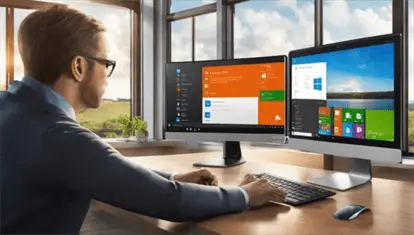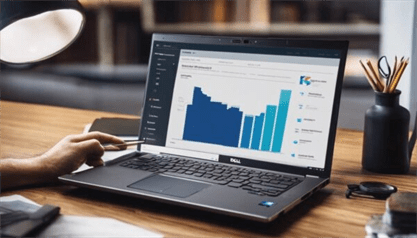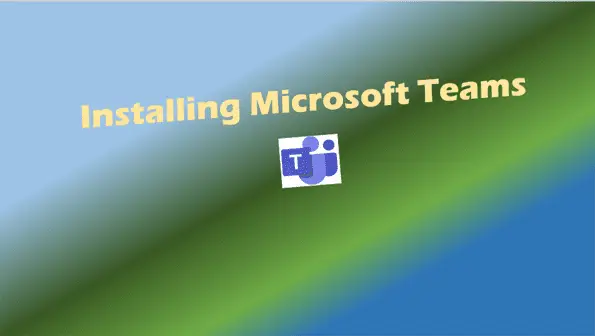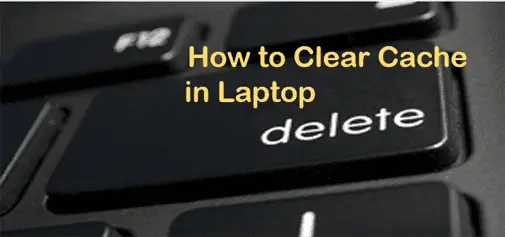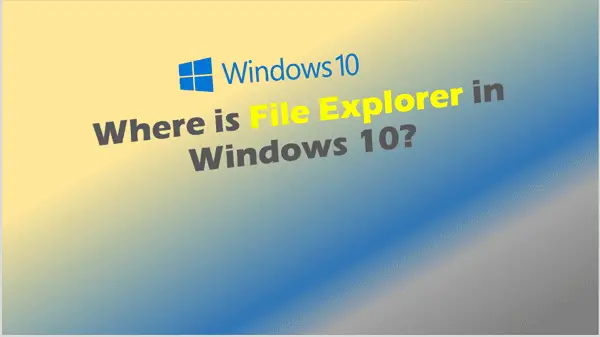Removal Guide: Microsoft Account on Windows 10
Remove Microsoft account Windows 10 and streamline your system for improved efficiency. Explore our guide today!
Understanding the intricacies of Microsoft Accounts and Local Accounts on Windows 10 is a critical step towards gaining complete control over your digital footprint.
Mastering the distinction between these two can, in numerous ways, enhance how you interact with your device and streamline your overall user experience.
Should you find yourself in the position of wanting to remove a Microsoft account from your Windows 10 system, acknowledging the ramifications is crucial to mitigating any loss or alteration of data.
In this light, let’s delve into the fascinating world of Microsoft accounts and local accounts, offering a detailed guide on their removal and switch process, and highlighting the paramount importance of backing up data prior to account removal.
Understanding Microsoft Accounts and Local Accounts – Remove Microsoft account Windows 10
Understanding the Crucial Differences Between Microsoft and Local Accounts in Windows 10
When it comes to user accounts, Windows 10 provides two main types: Microsoft and Local accounts. Understanding the distinctions between these two varieties is crucial for optimizing your operating system experience. Both serve unique roles and offer different features, allowing you to select use cases based on your specific needs.
A Microsoft account, also known as a Windows Live ID, is a comprehensive platform which integrates various services provided by Microsoft. This includes Outlook.com, Office Online, Bing, Skype, OneDrive, the Xbox Live network, or even the Windows Phone. It follows the cloud-based trend, implying all data related to these services can be synced across all devices logged into the Microsoft account. It’s a shining example of how integrated and seamless modern technology can be.
On the hand, a local account is a traditional form of log-in method that solely exists on your local machine. It does not provide any integration or syncing features with Microsoft’s ecosystem. A local account may seem more limited, but it offers privacy and simplicity – it’s independent of any outside networks or services.
One of the significant differences between these two types of accounts touch on applications and data synchronization. With a Microsoft account, synchronization is automatic across all Microsoft devices. This includes things like themes, internet favorites, passwords, and other settings. Local accounts, however, are confined to the specific computer on which they are set. Syncing apps, passwords, and settings across devices is not feasible with a local account.
In terms of privacy, local accounts outshine Microsoft accounts. Since local accounts are confined to a single machine, the risk of personal data falling into the wrong hands via the network is considerably minimized. But this isolation implies that if you forget your password, there is no straightforward way to recover it.
Microsoft accounts streamline the process of purchasing and downloading apps from the Windows Store. These apps can then be used across all the devices linked to the account. Conversely, with a local account, access to the Windows Store for app downloads is impossible without transitioning to a Microsoft account.
Resetting or recovering your account can be a breeze with a Microsoft account. Microsoft provides an online process for password recovery. Conversely, local account users might have to face more complex solutions such as creating password reset disks.
So, which is better: a Microsoft account or a local account? Ultimately, the decision is contingent upon an individual’s needs. If convenience, synchronization, and wide-ranging access to Microsoft services are top priorities, a Microsoft account is a solid choice. On the other hand, for those who prefer privacy and simplicity over synchronization and integration, a local account will serve admirably.
Whichever account type you choose, remember that technology should always work for you, not the other way around. Understand the differences, pick an account type that best aligns with your needs, and conquer the digital world your style.

Removing Microsoft Account from Windows 10
Let’s delve into the details regarding the removal of a Microsoft account from Windows 10. Before embarking on the process, it’s vital to remember to take requisite precautions. Important documents, photos, or files associated with the account should be appropriately backed up.
To start the procedure, it’s necessary to have administrative privileges. If the Microsoft account you’re about to remove is the only account with administrative access, set up a local account with administrative control first. To do so, follow the path: Settings > Accounts > Family & Other Users > Add someone else to this PC. Assign the new account administrative privileges.
Next, switch to the newly created local account with administrative privileges, get to the login screen and log in. Post-login, you’ll be at liberty to remove your existing Microsoft account. To accomplish this, visit the Settings menu > Accounts > Family & Other Users.
Under ‘Other Users,’ your Microsoft account should be visible. Select the account and click on ‘Remove.’ You’ll be prompted with a warning notification emphasizing the loss of data associated with this account, including Windows settings and apps. If you’ve backed up your data and understand the consequences, click ‘Delete account and data.’
A wise enthusiast would stay patient, as this process might consume time. It’s important to note that Windows merely renames the account holder’s home folder preserving the name it had, instead of deleting it. If higher user control over their machine, balance in security and privacy, and doing without certain conveniences of Microsoft accounts match your preferences, you’re making a splendid choice.
To tackle future confusions, users may opt for renaming the directory in order to align it with their new username. This will keep all the paths intact. The process involves accessing your deleted account, then renaming the folder.
Once you’ve removed a Microsoft account and moved to a local account, you can ease into the old-school tech life. You control your privacy and security, you analyze what data Windows has access to, while sacrificing some application syncing and system recovery benefits.
Mastering Windows 10 to suit your preferences establishes a profound sense of control over your digital world. Removing a Microsoft account might be a critical step towards tech-savviness for those seeking less data syncing and a more private Windows experience.
Adjust and bend technology to suit you better, because in this vast universe of technology, you’re the harbinger of change in your world.

Data Backup Before Account Removal
(Remove Microsoft account Windows 10)
In this digital era, being connected is key, and your Microsoft account serves as that all-important hub. However, there may come a time when you’d prefer to have your digital footprint less centralized and wish to disconnect your Microsoft account from your Windows 10 device.
Before making this leap, it’s crucial to consider and enact proper data backup to prevent unintended loss of valuable information. But, what exactly does this step entail, and why is it so critical?
Firstly, understand that your Microsoft account in Windows 10 integrates multiple features such as syncing your settings, apps, and files across various devices. When you remove this account, these synchronized elements will not be hard-linked to your local machine anymore. Imagine losing years of photos, countless documents, and the painstakingly-designed layout of your digital workspace. That’s what’s at stake without an appropriate backup.
Creating a backup is akin to ensuring you have a safety net before walking a tightrope. Regardless of whether the tightrope is a convenient cloud connection or secured local storage, you can’t afford a misstep without that net.
When you decide to remove a Microsoft account, the first step should be to backup data important to you. This can be accomplished through various means – using a physical external storage device, utilizing a local network-based storage, or even employing another cloud storage service.
Upon ensuring this safety net is in place, you can proceed to create a local account with administrative privileges. The switch to this newly created local account can then be made smoothly. With your critical data secured, removing the Microsoft account from your Windows 10 device will not inflict any data losses.
Remember that upon removal, Windows will rename your home folder rather than deleting it entirely. While not immediately devastating, this change can cause confusion. To maintain straightforward navigation in your system, consider renaming this directory to match your new username.
Indeed, a local account may not offer the same level of seamless device integration as a Microsoft account, but it does provide significant privacy advantages.
This is because local accounts limit data sharing with Microsoft’s servers, retaining information within your computer exclusively. This shift can be seen as a bold stride towards a more private, personally-controlled computer environment.
Making the most of Windows 10 involves understanding the system thoroughly, and that includes knowing when and how to use different account options. Whether you yearn for better privacy control or find a local account more to your liking, remember that technology is a tool for us to wield.
Do not be daunted by the perceived complexity. Merely embrace the technological opportunities, exercise precautions like backing up data, and tailor your digital world to your desires and needs.
Because in the end, the best kind of technology is the one that suits you.

(Remove Microsoft account Windows 10)
So, there you have it. Navigating through the process of Microsoft account removal can feel overwhelming, but with an understanding of the difference between Microsoft accounts and local accounts, you’re already in a powerful position to protect your data.
Data backup is your safety net, your assurance that no matter what, your information is secure.
The journey of understanding and performing these tasks does not only grant you further control of your digital life but also paves the way for you leveraging the world of technology to your benefit fully.
Here’s to an empowered and informed relationship with your Windows 10 system.
